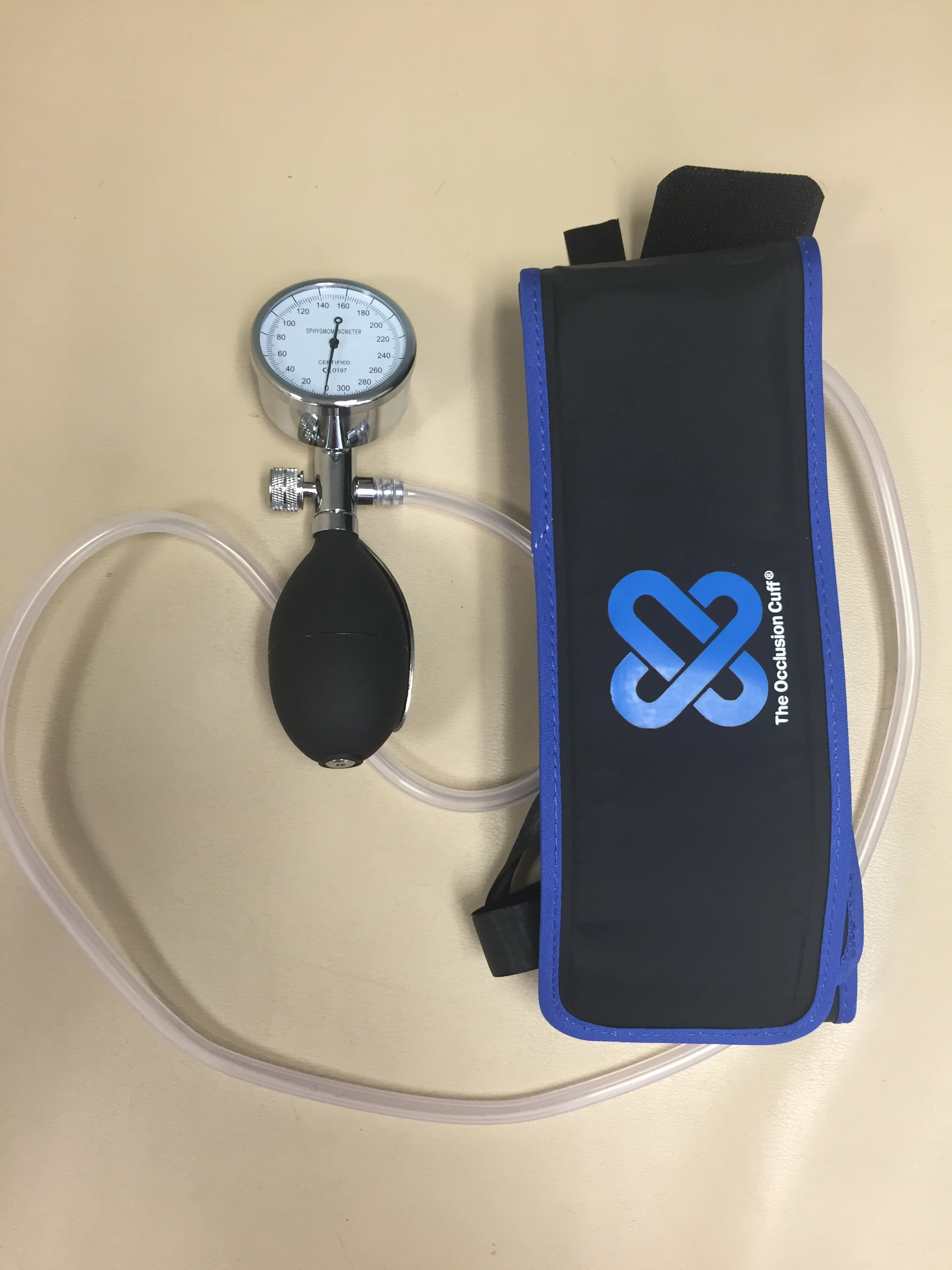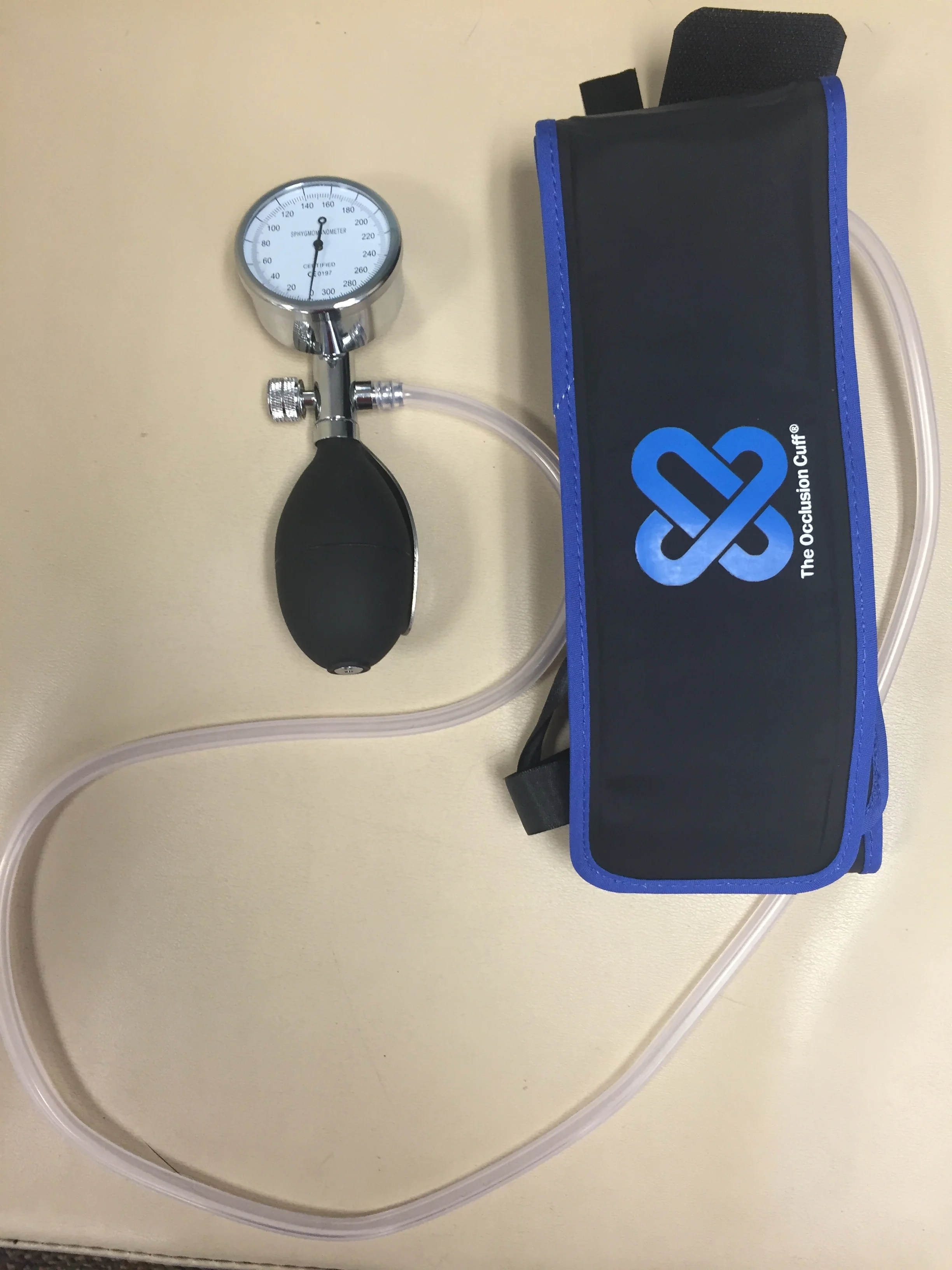Author: Bryan Lang, PT, DPT, MHA, OCS, CSCS, Cert.DN: Doctor of Physical Therapy, Business Owner, Associate Professor, and Blog Contributor. Explores common client questions, helps find solutions for every day functional health concerns, and interprets difficult theories in healthcare rehabilitation. Committed to life-long learning and education. Learn more about Bryan on Google+.
There’s a new buzz word in exercise training and physical therapy - it’s call Blood Flow Restriction Therapy or BFR Therapy. The treatment is in its relative infancy in the medical field, but it’s gaining significant traction as the military has started using it, as well as professional athletes from the NFL and NBA. On April 12th, ESPN posted a podcast on this new technique and how it has saved Houston Rockets Center, Dwight Howard’s, knees from regular wear and tear, and was critical in Houston Texans outside linebacker, Jadeveon Clowney’s, rehabilitation and microfracture surgery. Now, researchers are quickly trying to see if these case studies of the success of BFR Therapy can be validated in larger population studies, and the results so far are promising.
Before the results are discussed, it’s important to know what BFR Therapy is. BFR is a “tourniquet training” technique that reduces blood flow to an injured limb while an individual participates in strength training [1] . The technique was first introduced by physical therapist, Johnny Owens, from the Brooke Army Medical Center, to help wounded military veterans make dramatic strength gains. The preliminary results have been so promising, that it has caught the attention of medical research centers and professional/collegiate teams across the country.
Teams using BFR Therapy
- New York Giants
- Houston Texans
- Houston Rockets
- Houston Astros
- Chicago Bears
- Detroit Redwings
- Detroit Lions
- Carolina Panthers
- Portland Trailblazers
- San Antonio Spurs
- Cleveland Browns
- Cincinnati Reds
- Florida Gators
- Nebraska
- Mizzou
Centers Involved with BFR Therapy
- Institute for Surgical Research, SAMMC
- Memorial Hermann Health Care Center
- Methodist Houston
- SAMMC, Fort Sam Houston
- AMEDD Center and School, Fort Sam Houston
- Center for the Intrepid, Fort Sam Houston
- Walter Reed National Military Medical Center, Bethesda MD
- Fort Bragg, Womack Army Medical Center
The mechanism as to how the strength gains occur is not fully understood. There are theories ranging from significant buildup of metabolites by anaerobic metabolism, a systematic anabolic response and cellular swelling or a combination of all three [2]. Regardless of mechanism, it has been found by researchers that using a tourniquet around the muscle creates a low oxygen state. This low oxygen state “tricks” the body to use specific muscle fibers that are usually only used for very strenuous tasks like sprinting or heavy weight lifting. Furthermore, there is an effect on the brain. The low oxygen state cause the brain to release anabolic substances like human growth hormone by sometimes as much as 290 times more than our baseline [3]. It has been widely accepted for years in the medical field that in order to increase strength and size of normal muscle, the individual must lift a weight that is 50-60% of the maximal weight that they are able to lift once (low load resistance muscular training with moderate restriction of blood flow after anterior cruciate ligament reconstruction). However, with BFR training, the loads are usually only 20-30% of an individual's one rep maximum [2].
Believe it or not, BFR Therapy is not really new in the exercise world. Bodybuilders have used a crude form of BFR Therapy for years in order to block blood from leaving a muscle that is being exercised in order in increase the skeletal muscle pump in the area. Bodybuilders use it to continue to maintain muscle and strength gains while being able still being able to do it with lifting less heavy weight. It’s not a substitute for heavy weight training, but it can be adapted into a body building program for more muscular gains. The difference between the BFR Therapy and what bodybuilders do is that bodybuilders will simply wrap straps around arms (in essence using the strap as a tourniquet) or place knee wraps around their thighs while they train. BFR Therapy when used in physical therapy is much more technical. The pressure of the cuff in order to restrict blood flow in a limb is multifactorial and requires knowledge of the individual's blood pressure, how wide the muscle is, size of the limb, how much muscle is in your limb, how wide the cuff is, where the cuff is being placed… etc. When all of these data points are calculated, some say that BFR Therapy could be actually safer than regular exercise since the weights being used are much lighter. Some wonder if blocking blood flow from muscles is safe, but tourniquets have been used in surgery for years and sometimes the tourniquets are on for over two hours. In BRF Therapy, the tourniquet cuffs are only on for 5 minutes. The biggest concern with BFR Therapy is the concern of nerve damage if thinner cuffs are used. This is why it is critical it have a medical professional administer the cuff in the appropriate manner.
Physical therapists are hoping that BFR Therapy will be a new breakthrough in the ability to rehabilitate injured athletes, weekend warriors, and even sedentary individuals faster and get larger muscle growth without placing painful stresses on injured structures with large amounts of weight. There is even hope that this treatment could help reduce the muscle degeneration that occurs as we age (approximately after the age of 30) by continuing to recruit the same muscle fibers as strenuous tasks and by releasing the same anabolic hormones without lifting the heavy weight. There are no long term data yet on BFR training, but there are now over 160 peer-reviewed studies and, as stated before, the results are very promising in the medical field. A systematic review of 400 participates in 19 different studies showed that BFR exercise training was effective in augmenting changes in both muscle strength and size [4]. Even more amazing was that the same study said that training helped with both resistance training (more anaerobic training) and aerobically-based exercise. The researchers were also very surprised by the “relatively short duration of the average intervention.” A more specific study looked at using BFR exercise training after ACL repair for injured knees. Forty-four subjects were split into two groups. Group 1 had BFR exercise training and group 2 trained without restriction of blood flow. Both groups had the same training schedule. After 16 weeks of therapy, the results showed a significant increase in muscular strength, significantly large muscle gross sectional area of knee extensor muscles, larger short diameters of type I and type II fibers in the muscle, and a larger vastus lateralis (part of the quadriceps muscle) [5]. Studies have looked at what BFR training can do on aerobic activities such as walking and cycling as well. One study showed that thigh and quad muscle volumes, extension strength, and VO2max (the maximum amount of oxygen the body can use during a specified period) all increased [6].
Current Ongoing Clinical Research
- Knee Arthroscopy Trial (completed/submitted for publication)
- Anterior Cruciate Ligament Reconstruction
- Chronic Thigh Weakness After Surgery
- REPAIR Study
- Chronic Achilles Tendinopathy
- Distal Radius Fractures
- Meniscus Tear/ Repair Study
- Regenerative Medicine and BFR
Works Cited
[1]Bloodflow Restriction Training Featured on ESPN, Part of Military Rehab Program to be Discussed at CSM. (n.d.). Retrieved August 11, 2016, from https://www.apta.org/PTinMotion/News/2014/11/12/ESPNTourniquet/
[2] http://www.owensrecoveryscience.com/blog/category/research/
[3] New method may benefit athletes. (2015, November 12). Retrieved August 11, 2016, from http://espn.go.com/nfl/story/_/id/11858977/tourniquet-training-change-way-athletes-recover-injuries
[4] Slysz, J., Stultz, J., & Burr, J. (2015, September 28). The efficacy of blood flow restricted exercise: A systematic review & meta-analysis. Retrieved August 11, 2016, from http://www.ncbi.nlm.nih.gov/pubmed/26463594
[5] Ohta, H., Kurosawa, H., Ikeda, H., Satou, N., & Nakmura, S. (2003, February). Low-load resistance muscular training with moderate restriction of blood flow after anterior cruciate ligament reconstruction. Retrieved August 11, 2016, from http://www.ncbi.nlm.nih.gov/pubmed/12635796
[6] Loenneke, J. P., Abe, T., Wilson, J. M., Ugrinowitsch, C., & Bemben, M. G. (2012, October 4). Blood Flow Restriction: How Does It Work? Retrieved August 11, 2016, from http://www.ncbi.nlm.nih.gov/pmc/articles/PMC3463864/






